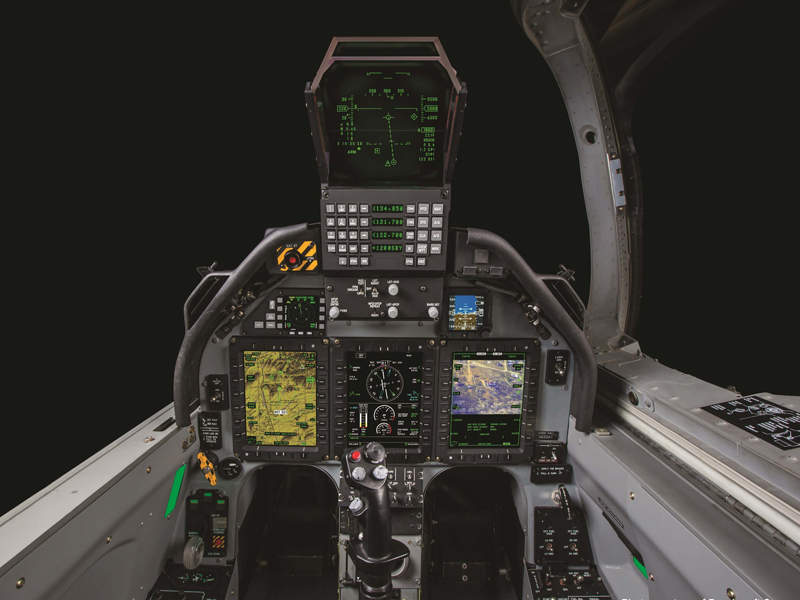
As the United States Air Force (USAF) continues its light attack aircraft program with the Textron Aviation [TXT] AT-6 Wolverine and the Sierra Nevada Corporation (SNC)/Embraer A-29 Super Tucano, the military service plans to conduct experiments to ensure that the planes’ avionics networks are compatible with those of other military services and national defense forces.
The Air Force released a final request for proposals Oct. 24 to procure no more than six light attack aircraft in the coming months. The Air Force plans to buy the planes with unused fiscal year 2018 or fiscal year 2019 funds, which would be split evenly between the AT-6 and A-29. Contract award is expected by the end of the year for the A-29 and in early 2020 for the AT-6.
“As per the USAF Request for Proposals, we will be on contract to deliver a non-developmental aircraft capable of conducting the Light Attack mission,” Textron Defense said in an emailed response to questions about their participation in the light attack competition. “The purpose behind the USAF purchase of the aircraft is to conduct continued light attack experiments — to include experimentation on the networks.”
Textron has said that the AT-6 Wolverine is “compatible with all fielded US joint terminal attack controller (JTAC) digital voice/data/video capabilities and with their NATO equivalents.”
The company has said that the aircraft has a CMC Cockpit 4000 avionics suite that is Federal Aviation Administration-certified and uses the same Lockheed Martin [LMT] combat mission system featured in the A-10C Thunderbolt II. The pilot/vehicle interface and cockpit are similar to that of the Air Force’s F-16 fighter jet, according to Textron.
The AT-6 also has an L-3 Harris Wescam [LHX] MX-15Di turret giving color and infra-red cameras, a laser designator, laser illuminator, laser spot tracker, and laser range-finder.
For its part, SNC said that the A-29 Super Tucano fulfills the interoperability requirement for the Air Force light attack aircraft program “along with inclusion of Link-16 to enable additional data sharing.”
“The A-29 is mission-proven as having the interoperability and networking capability to gather, process, harness and disseminate data to U.S. and allied forces on the ground and in the air,” according to SNC. “It has achieved this objective in combat in Afghanistan and with 13 partner air forces around the world. With its combination of advanced sensors and its ability to network with joint forces and coalition partners, the A-29 acts as a force multiplier as part of a fully integrated air and ground combat team sharing data across the battlefield. The A-29 can enter inventory ready to plug into USAF Command & Control (C2) architecture. It’s unique in its design as an open architecture platform, capable of rapid integration of new sensors, radios and mission software, and in the aircraft’s ability to match the growing need for Multi-Domain Command & Control (MDC2) required for U.S. and allied forces.”
Last week, Air Force Chief of Staff Gen. David Goldfein said that the program’s focus is on how a light attack aircraft can help U.S. allies and partners to confront violent extremism and conduct operations within their borders. “Continuing this experiment, using the authorities Congress has provided, gives us the opportunity to put a small number of aircraft through the paces and work with partner nations on ways in which smaller, affordable aircraft like these can support their air forces,” he said, adding that the experiment would examine a common architecture and intelligence-sharing network that can connect platforms, sensors and weapons and provide a digital network for light attack aircraft.
When asked about the need to establish a new network for data sharing, the Air Force declined to divulge more details of the experiment’s planned look at a common architecture and intelligence-sharing network to link platforms, sensors and weapons and the furnishing of a digital network for the aircraft. Instead, the Air Force referred questions to the program contractors.